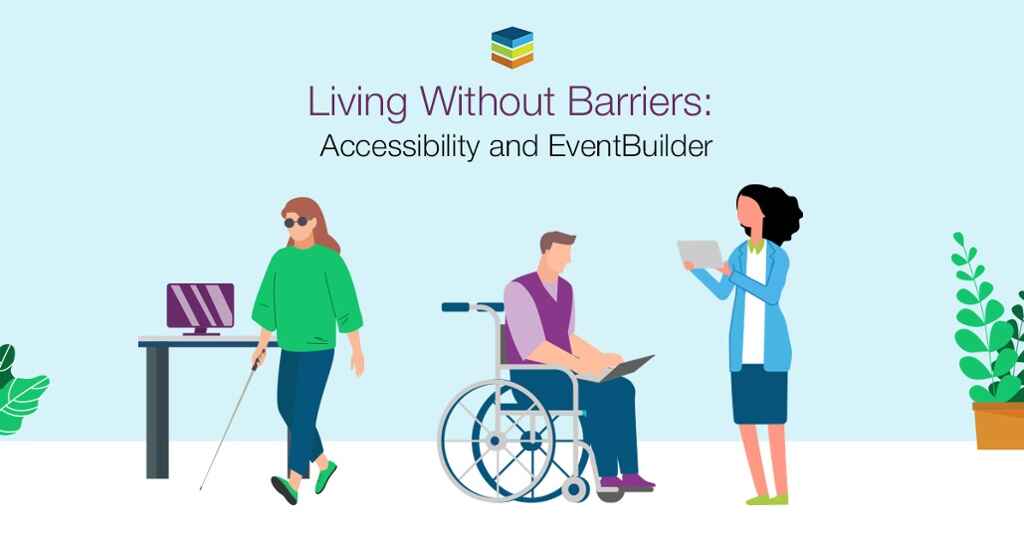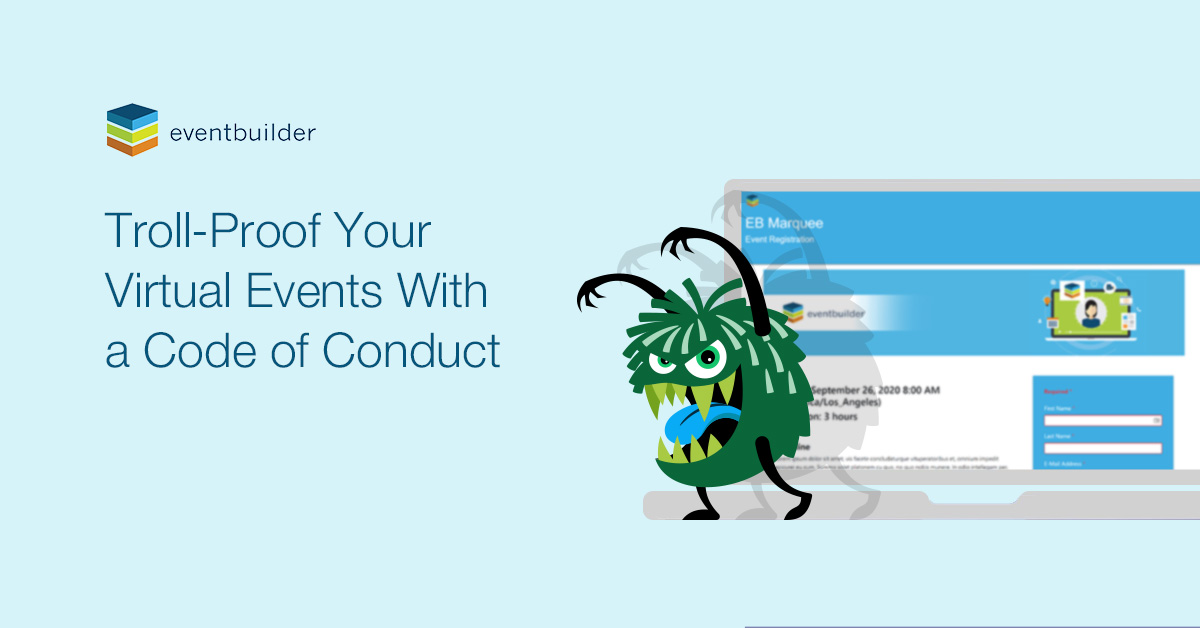Are Your Virtual Events Truly Accessible?
People with disabilities spend half a trillion dollars annually. That's $500,000,000,000. The U.S. Office of Disability Employment has noted that people with disabilities are the "third largest market segment" in the United States. Collectively, they are a market that is often overlooked and underestimated, and absolutely should not be dismissed.
When we provide tools for access, we invite people to bring a unique perspective, set of skills, and insights to the table, virtual or otherwise. Unfortunately, the lack of truly accessible and inclusive experiences is frequently a barrier to inclusion and full participation, in both physical and digital spaces. Keep this question in mind as you plan online events: Are your virtual events truly accessible? Let's close the gaps in your accessibility plan.
In the virtual events realm, there are common accommodations you are likely familiar with, such as closed captioning. However, if you do not have a disability yourself, it can be difficult to conceptualize what someone with a disability may need. There are ways to provide virtual event access at every stage, from concept to post-event follow-up. A little extra thoughtfulness and effort at each step will make your event truly stand above the crowd.
Inclusive Design Principles
Inclusive Design Principles are a set of standards to help online content creators design for the needs of people with disabilities. Keep these in mind as you plan your event:
- Provide a comparable experience
- Consider the situation
- Be consistent
- Give control
- Offer choice
- Prioritize content
- Add value
Tips for Organizers
You may have requests for hearing, visual, cognitive, mobility, speech, and neurological accommodations. Pre-event planning is the true key to covering your accessibility bases.
- Standards — Create accessibility standards and documentation for your event programming. Standardize attendee-facing materials with design elements that are WCAG-compliant , offer alternative join options such as dial-in by phone for each event, and maintain consistency with regard to closed captioning, transcript availability, and captioned media.
- Accommodation Statement—Add an accommodation statement to your attendee-facing materials with contact information. This signals your awareness of the law, that you are open to making accommodations, and that you welcome the inquiry. Make clear in the statement that you will not ask about nor require documentation related to the individual's disability. Place your accommodation statement near your registration questions, indicate what accommodations are provided without request (such as closed captioning) and provide contact information for accommodation requests.
- Resources — Have a list of vetted resources available, for internal use and upon attendee request. Include suggestions for accommodation providers such as live closed captioning services and audio description/narration services. Increasingly, here are innovative companies making services available for people who require accommodations.
- Registration Page Design — This is your first impression! Your Registration page should include:
- WCAG-compliant color contrast
- A clean, readable font size
- Alt text on images
- Simple-to-use menus and clearly stated action buttons
- An evaluation of your Registration page prior to distribution via tools such as WebAIM
- Registration Questions — Clearly indicate which questions are required, make sure each input field has a label, and for graphic buttons, add the label in the image alt text. Keep the layout and flow of the questions logical and simple.
- Registration Confirmation — On attendee registration confirmations, create a set of very clear, step-by-step instructions for joining the event. This simple action makes it easier for all attendees and can help prevent day-of disasters. Additionally, communicate regularly with attendees who have requested accommodations to confirm.
- Accessible Event Materials — Offer event agenda & presentation materials ahead of time in an accessible file format. Vendors such as RoboBraille can convert documents to accessible formats quickly and easily. Allow attendees to submit questions/comments in advance as well. This is particularly helpful for attendees who may have speech/language obstacles.
- Event Agenda —Digital fatigue is a real thing for everyone, but it can be compounded for people with disabilities for a variety of reasons. Schedule regular breaks into your event agenda.
- Event Rehearsal — Run a rehearsal and test out the live event accommodations you've added. Make sure they're working and in place. If possible, include a person with a disability to help you identify and troubleshoot ahead of time.
- Accessible Event Tech — Event technology should include navigation options that don't require a mouse and that users can adjust to fit their needs.
- Feedback —Send a post-event survey and ask for feedback. What went well? What didn't? What can be improved?
Moderators
Your event moderators can make or break the live event experience for your attendees with accommodation needs. Pass along these tips to help them manage the live event elements that have the potential to be problematic for people with disabilities.
- Communication Guidelines — Post participation expectations in the chat and repeat them verbally at the start of the live event. Include instructions for what to expect during the Q&A portion of the event.
- Announcements — At the opening of the event, verbally go over the event agenda. Announce segues and breaks as they arise.
- Cues — Cue participants if they are asked to respond to questions and/or icebreakers.
- Agenda Keeping — Help steer the event to stay on track and on-topic.
- Turn-taking —Utilize tools such as the Hand Raise feature in Teams and facilitate an evenly paced conversation. Instruct presenters and attendees to state their names when speaking.
- Background Noise — Advise attendees to mute their devices when not speaking.
- Chat Monitoring — Attendees use the chat tool for a variety of reasons. Keep tabs on it and read messages aloud if deemed necessary.
- Patience — Keep a steady event pace, and allow for pauses between topics. This gives everyone an opportunity to catch up and process the information being shared.
- Rehearse — Practicing timing, hand-offs, and other presenter-moderator interactions will help your live event go smoothly.
Presenters
The essential elements for presenters include good lighting and sound; however, there are a few nuances to keep in mind as you prepare event presentations.
- Production —It bears repeating: Good lighting and sound is worth the investment, not only for your attendees with accessibility needs, but for everyone. Look like a pro.
- Lip Reading —Face the camera to aid in lip reading whenever possible.
- Accessible Slides —Learn best practices for creating accessible slide decks .
- Closed Captioning —Ensure all media is closed captioned.
- Video vs. Copy —Separate slide copy and video embeds onto two different slides. Screen readers working while media is playing simultaneously doesn't make for a great experience.
- Strobes/Flashing —Steer clear of flashing effects in presentation materials.
- Content vs. Captions — Leave a margin on the bottom of slides so captions don't cover slide content.
- Alt-tags — Add Alt-tags to presentation visuals, e.g., images, tables.
- Check and Correct —Prior to presenting, use an accessibility checker . (PowerPoint has a built-in tool.)
- Steady Pacing — When presenting, be mindful of your pace, and pause before moving to the next slide or media.
- Q&A —For Q&A, be cognizant of attendees who may be using accessible tools, such as screen readers and AAC devices. Provide a few moments for attendees to catch up, ask questions, or provide comments. Patience is key.
Representation Matters
Consider finding thought leaders/experts in the field of your event topic who have a disability and invite them to present in their area of expertise. Knowing you are seen, heard, and valued is the heart of true inclusion.
EventBuilder's Commitment to Inclusion
EventBuilder's portal-side and attendee-facing products are WCAG 2.1 AA compliant, and we scan quarterly to maintain consistent compliance with accessibility standards. Making sure all of your attendees can access your events and customize their experience as it best suits them is a priority for EventBuilder. We work continually to design our products and event management services for everyone to access and enjoy without barriers.
Contact us today and learn how we can assist your attendees and create an accessible experience for everyone.
You May Also Like
These Related Stories

Creating a Multi-Day Accessible Virtual Event

Living Without Barriers: Accessibility and EventBuilder



No Comments Yet
Let us know what you think